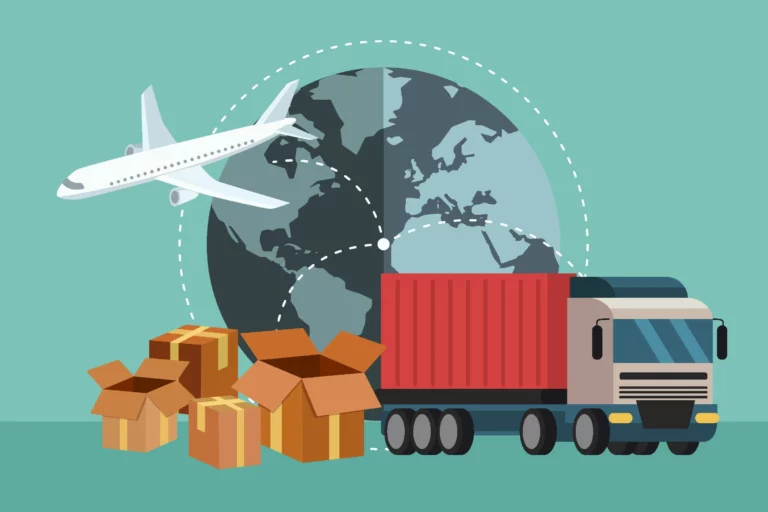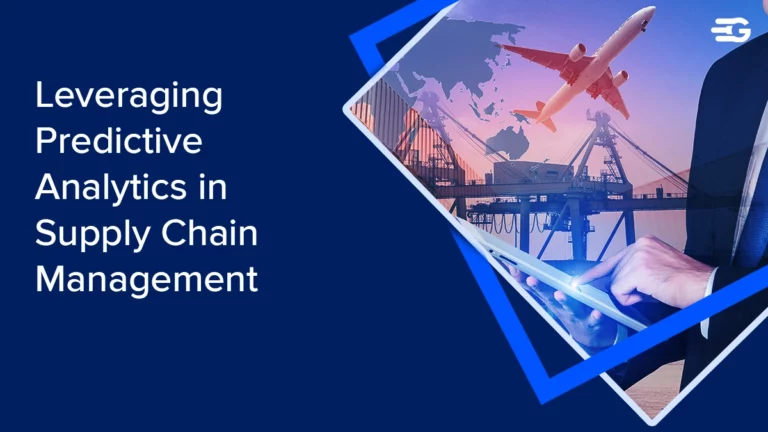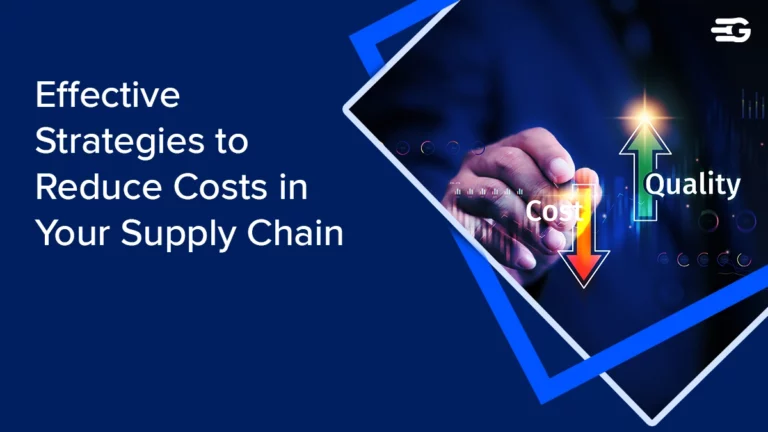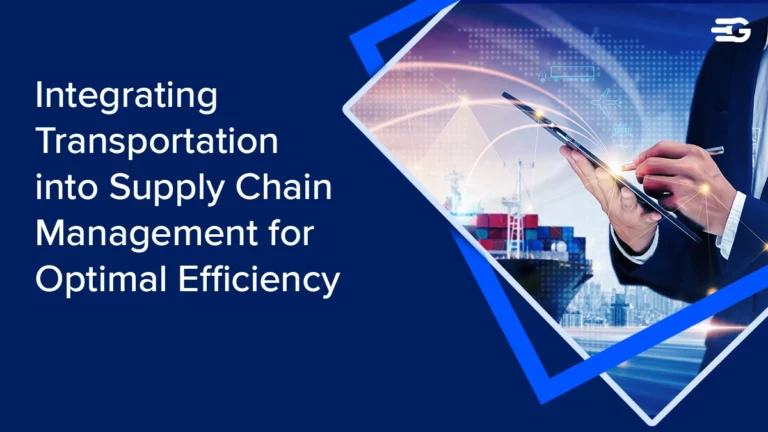What is Supply Chain Analytics? How Does it Help in Decision Making?
The adoption of supply chain analytics has been on the rise in recent times. Fortune Business Insights records an $8 billion valuation as of 2023, and projections indicate the growth to reach over $33 billion market at an annual growth rate of 17%. Beyond these hard numbers, supply chain analytics has played a pivotal role in several businesses to survive and thrive through some of the major generational challenges.
- The retail giant Walmart has witnessed a remarkable improvement in inventory optimization and supply chain management owing to supply chain analytics. This improvement has been further reflected in terms of better product availability and cost reductions. This has resulted in reduced fulfillment center costs by 15% through optimized warehouse layouts and inventory placement and Improved on-time delivery rates by 5% based on SCA insights
- Amazon has been a significant benefactor of predictive analytics, leveraging it to better delivery time as well as warehouse management systems.
- The global leader in retail marketing, Alibaba recorded a notable reduction in the order fulfillment time by an average of 2 days through the adoption of supply chain analytics rendering an increase in the overall supply chain efficiency by 12%
The prime aspect to realize through this case study is that supply analytics has been at the core of all such strides by these global conglomerates, enabling their monetary benefits and advantages in terms of strategic orientation. As we delve into domains, the integration of analytics into supply chain mapping has become indispensable. It’s not just about number-crunching; it’s about unlocking hidden insights that can reshape how businesses operate.
In a way, a company’s supply chain resembles an intricate spider’s web, with each strand representing a different facet of your operations. Here analytics is a powerful magnifying glass, that enables you to zoom in on each strand, revealing invaluable insights that can drive smarter decisions.
Why is analytics gaining such prominence in supply chain management?
In a fiercely competitive market, every moment wasted and every dollar spent unnecessarily can make or break a business. By bringing analytics into the play, companies can streamline their processes, cut costs, and gain a competitive advantage.
But is it just about making better decisions? No, it’s also about staying compliant with regulations. In many industries, strict rules govern everything from product safety to environmental sustainability. Analytics can help companies navigate these regulations while maintaining operational efficiency.
In essence, integrating analytics into supply chain management isn’t merely a wise move; it’s becoming essential for companies aiming to thrive in today’s competitive landscape.
Evolution and Impact of Data Analysis in Logistics
Historically, supply chain management relied heavily on manual processes and archaic record-keeping methods. Inventory tracking, order processing, and logistics coordination were marred by human errors, leading to delays, inaccuracies, and missed opportunities. These challenges underscored the pressing need for a transformative solution.
Dramatically enough the dawn of computer systems in the latter half of the 20th century marked a paradigm shift in data management within supply chains. Those electronic databases provided digital apparel to information. While a step forward, the early data architectures, barely had the layer of sophistication and scalability to tackle bustling amounts and complexities of data and network nodes.
Enterprise resource planning (ERP) systems promise integration and efficiency across various facets of the supply chain. However, ERP systems grappled with real-time monitoring and data processing besides scalability.
The seminal work by IBM researcher Hans Peter Luhn, credited with coining the term “business intelligence” became the milestone for supply chain analytics that extrapolated the scope of analytics.
Further visionaries like Dr. Bernard J. “Bud” La Londe proposed holistic frameworks like business logistics, and technologist Kevin Ashton pioneered the use of RFID sensors opening the IoT in the realms of supply chain management.
In the 21st century, the convergence of big data, cloud computing, and advanced analytics techniques catalyzed a seismic shift in supply chain analytics. Predictive analytics, real-time monitoring, and intelligent analytics are the interlinks of the supply chain that enable their integrity and utility.
As the narrative unfolds, emerging technologies like blockchain, advanced robotics, and augmented reality are dabbling in search of optimization and innovation in the ever-evolving landscape of supply chain management.
Dramatic and moving, right? It is no less than remarkable how in tandem with human anatomic evolution the modes and methods of communication evolved from ruffling pages of bulky books to now having all that is needed at the vicinity of a click.
Also Read: What is Supply Chain Analysis?
Navigating Types of Analytics in Logistics
Having skimmed through the origin story of analytics in logistics, now let’s understand the buffet of supply chain analytics, each with its unique flavor and purpose.
- Descriptive analytics: It looks at past data, using dashboards and reports to paint a picture of what’s been happening in our supply chain. So, if you’ve ever wondered how our inventory levels have changed over time or what our return on invested capital looks like, descriptive analytics has got you covered.
- Diagnostic analytics: It figures out why things aren’t working as smoothly as they should. So, if shipments are getting delayed or lost, or if we’re not hitting our inventory targets like our competitors, diagnostic analytics digs deep to uncover the root cause.
- Predictive analytics: It uses current data to predict future outcomes. So, if we’re wondering how new trade regulations or a pandemic lockdown might affect our supply chain, predictive analytics can give us a glimpse into the crystal ball and help us prepare for what’s to come.
- Prescriptive analytics: This is the problem solver that helps us make better decisions. It not only tells us what’s likely to happen but also recommends the best course of action. So, whether it’s deciding when to launch a new product, where to build a new factory, or how to optimize our shipment strategies, prescriptive analytics has got our back.
Besides these, there are several other types of analytics pivotal in the realms of logistics.
- Workflow analytics helps streamline your processes, making them more efficient and less prone to errors. Decision support analytics provides you with the insights you need to make better decisions.
- Unstructured text mining takes messy data from contracts, social media, and news reports, and turns it into something useful for your supply chain. Structured data management ensures that your data is organized and easy to access, making analytics efforts more effective.
Driving Efficiency: Key Advantages of Integrating Analytics
So, as we discuss the role of analytics in logistics, let’s understand the key advantages of integrating analytics:
- Make Smarter Decisions: With analytics, businesses gain valuable insights from past data and future predictions, empowering them to make informed decisions at every step of their logistics journey with utmost supply chain visibility.
- Boost Efficiency: By pinpointing inefficiencies and streamlining operations, analytics help companies save time and money, making their logistics processes more efficient and effective.
- Manage Risks Effectively: Predictive analytics enable businesses to anticipate and manage risks proactively, whether supply chain disruptions or market uncertainties, ensuring smoother operations and fewer surprises.
- Delight Customers: By optimizing logistics processes and ensuring on-time deliveries, analytics contribute to improved customer service, leading to higher satisfaction levels and stronger relationships.
- Stay Ahead of the Curve: By harnessing the power of analytics, companies gain a competitive edge, identifying opportunities for growth, innovation, and adaptation in today’s dynamic business landscape.
Success Stories: Analytics in Action
The challenge of Suez Canal blockage: A global tire manufacturer with facilities around the world faced a major challenge when the Suez Canal blockage halted millions of dollars worth of their shipments. This caused delays in finished goods deliveries to customers and disrupted raw material supplies for production in India. To navigate this crisis, the company implemented GoComet’s GoTrack Automated Shipment Tracking System. This data analytics tool provided real-time visibility into shipment locations and rerouting strategies. It also delivered predictive data and daily reports, allowing the company to make informed decisions. The impact was significant. Real-time data empowered them to make strategic choices, resulting in cost savings of $800,000 through resource reallocation and optimized production cycles.
Building Blocks of an Analytical Supply Chain
Now that there is proof of the utility of an integrated analytics supply chain, let’s understand the components of an analytical supply chain.
- Data Integration: Bringing together data from various sources like ERP systems, IoT devices, and external databases is crucial. This helps create a unified dataset, giving a comprehensive view of the supply chain.
- Real-Time Data: Having access to the latest information is vital. Systems that capture and analyze data in real-time enable quick decision-making and adaptability to changing market dynamics.
- Demand Forecasting: Accurate predictions of demand are essential. By analyzing historical sales data, market trends, and customer insights, businesses can better manage inventory and plan production efficiently.
- Inventory Management: Monitoring inventory levels, supplier performance, and lead times in real-time is key. This helps optimize stock levels, prevent stockouts, and reduce inventory holding costs.
- Logistics Tracking: Tracking the movement of goods throughout the supply chain is crucial. Implementing tracking systems such as RFID and GPS enhances visibility and allows proactive management of shipments.
- Supplier Collaboration: Building collaborative relationships with suppliers is essential. Effective communication channels enable the exchange of information on orders, deliveries, and quality, fostering transparency and resolving issues promptly.
- Risk Management: Identifying and analyzing potential risks is vital. This includes supply chain disruptions, market fluctuations, and geopolitical events, allowing businesses to develop proactive mitigation strategies.
- Customer Feedback: Gathering and analyzing feedback from customers is invaluable. Insights from surveys, social media, and reviews help understand preferences, enhance satisfaction, and drive innovation.
- Performance Metrics: Defining and monitoring key performance indicators (KPIs) is essential. Metrics such as on-time delivery, inventory turnover, and order accuracy provide insights for improvement and optimization.
Overcoming Obstacles in Analytics Adoption
As we open the doors to the advantages of supply chain analytics, it is bound to bring in some dust and dirt, i.e. some challenges. Here are some of those common challenges of supply chain analytics and the strategies to overcome them:
1. Data Quality and Integration: High-quality, integrated data is the cornerstone of effective analytics. Invest in robust data cleansing and integration tools to ensure accuracy and consistency across your supply chain. Consider partnering with experts in data management to streamline the process and maximize the value of your data assets.
2. Lack of Skilled Personnel: Finding skilled personnel proficient in both analytics and supply chain management can be a daunting task. Invest in training programs to upskill your existing workforce and recruit top talent from diverse backgrounds. Foster a culture of continuous learning and development to empower your team to tackle complex analytical challenges.
3. Resistance to Change: Change management is key to overcoming resistance to new technologies and processes. Communicate the benefits of analytics initiatives to stakeholders at all levels of the organization. Involve key stakeholders in the decision-making process and provide ample support and training to ease the transition.
4. Cost and Resource Constraints: Balancing the budget while investing in analytics capabilities can be challenging. Conduct thorough cost-benefit analyses to prioritize projects that deliver the highest ROI. Explore cost-effective solutions such as cloud-based platforms and strategic partnerships to optimize resource allocation and maximize value.
5. Data Security and Privacy Concerns: Protecting sensitive data is critical in today’s digital landscape. Implement robust cybersecurity measures to safeguard data against threats and breaches. Ensure compliance with data privacy regulations and establish clear policies and protocols for data usage and access.
Blueprint for Implementation: Introducing Analytics into Supply Chains
After being aware of the pros and cons of analytics in the supply chain, here’s the step-by-step approach for businesses planning to integrate analytics into their supply chain management practices.
- Assess Current State: Begin by evaluating your current supply chain processes and identifying areas where analytics can add value. Consider factors such as data availability, technology infrastructure, and organizational readiness.
- Define Objectives: Clearly define the objectives of your analytics initiative, such as improving inventory management, optimizing transportation routes, or enhancing demand forecasting accuracy. Align these objectives with your overall business goals and priorities.
- Data Collection and Integration: Establish robust data collection mechanisms to gather relevant data from internal and external sources. Invest in data integration tools to consolidate and harmonize data from disparate systems and formats.
- Analytics Tools Selection: Choose analytics tools and technologies that align with your objectives and data requirements. Consider factors such as scalability, flexibility, and ease of use when selecting the right tools for your organization.
- Pilot Testing: Conduct pilot tests or proof-of-concept projects to validate the effectiveness of your analytics approach. Start with small-scale initiatives to minimize risks and gather insights for future scalability.
- Implementation and Integration: Roll out your analytics solution across the supply chain, ensuring seamless integration with existing processes and systems. Provide training and support to end-users to facilitate adoption and maximize the impact of analytics.
- Continuous Improvement: Establish a culture of continuous improvement by regularly monitoring and optimizing your analytics initiatives. Solicit feedback from stakeholders and leverage insights gained from analytics to drive ongoing enhancements and refinements to enable sustainable supply chain operations.
Measuring the Impact: Analytics Performance Indicators
As we instill the structural aspects of supply chain analytics, here are the ways to monitor and measure their impact:
- Inventory Turnover Ratio: Measure the rate at which inventory is replenished or sold over a specific period to assess the efficiency of inventory management efforts.
- On-Time Delivery Performance: Track the percentage of orders delivered on time to evaluate the effectiveness of transportation and logistics operations.
- Forecast Accuracy: Evaluate the accuracy of demand forecasts compared to actual sales data to gauge the effectiveness of demand planning and forecasting processes.
- Cost Reduction: Quantify cost savings achieved through improved efficiency, optimized resource allocation, and reduced waste attributable to analytics-driven initiatives.
- Customer Satisfaction: Monitor customer feedback, retention rates, and Net Promoter Score (NPS) to measure the impact of supply chain analytics on overall customer satisfaction and loyalty.
Future Trends: The Next Frontier in Supply Chain Analytics
Looking ahead, the future of supply chain analytics appears promising and full of potential. With advancements in technology like AI, IoT, and blockchain, businesses can expect more efficient and transparent supply chains. Predictive analytics will act as a guiding light, helping to navigate risks and challenges before they arise.
Additionally, sustainability will take center stage, with analytics driving efforts to minimize environmental impact and promote circular economy practices. Collaboration and data sharing among supply chain partners will further enhance visibility and coordination.
Today, the significance of adopting a data-driven culture cannot be overstated. It’s the key to unlocking continuous improvement and maintaining a competitive edge in supply chain management. Platforms like GoComet, enable organizations to streamline operations, optimize processes, and stay agile in the face of changing market dynamics. With data as the foundation, businesses can navigate uncertainties, drive efficiency, and pave the way for sustained success.





